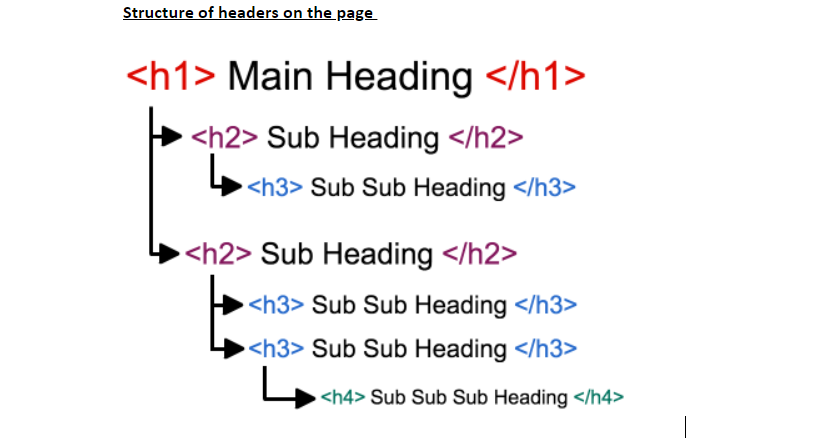The era of AI is here and we have to accept that browsers are already rebuilding their algorithms and things will change regarding organic search. We will again learn a lot and change radically. However, there is fundamental knowledge that will not disappear anywhere for now and we need to know it for a high SERP.
Let’s keep it together in one place.
Well, below, you will find a long SEO story based on my own experience and SEO people I follow and whose books I read.
Search Engine Optimization – a set of actions that makes a website pinned up.
1. Technical SEO
Website Performance
It’s crucial to understand key performance metrics for website optimization.
Time to First Byte (TTFB) measures the time from an HTTP request to the first byte received by the browser, ideally under 200 milliseconds.
First Contentful Paint (FCP) tracks the time until initial content appears during loading, aiming for less than 1 second.
Largest Contentful Paint (LCP) focuses on the render time of the largest content element, targeting 2.5 seconds or faster.
First Input Delay (FID) gauges the time from a user interaction to the browser’s response, with a goal of under 100 milliseconds.
Cumulative Layout Shift (CLS) assesses the total of all layout shift scores, aiming for less than 0.1.
Fully Loaded Page time should ideally be under 3 seconds, ensuring optimal user experience.
The optimal loading < 3.0s = Green zone.
Image Optimization
Choose the right file format, with JPEG ideal for colorful photographs, PNG for images needing transparency, and WebP for efficient compression.
Name files descriptively with keywords, like ‘sony-digital-camera.jpg’ instead of ‘img001.jpg’.
Balance image size and quality to prevent slowing down your site.
Always include alt text for SEO and accessibility, and consider adding title text for additional information.
Captions and structured data can enhance image visibility, but they’re optional.
Include image URLs in sitemaps for better discovery by search engines.
Implement lazy loading so images load as they appear on screen, and use responsive images with the ‘srcset’ attribute to adapt to various screen sizes.
This approach will improve your site’s SEO and user experience.
The image should be relevant to the content.
Leverage Browser caching
While browser caching is generally beneficial, it could be better for all elements on a webpage. For instance, elements that change frequently or are dynamic might not benefit from long-term caching, as we’ll want the user to get the most up-to-date version each time they visit our website.
Minimize HTTP requests
Here’s a guide on minimizing HTTP requests to speed up your website.
First, reduce the number of files by minifying and combining JavaScript, HTML, and CSS files.
Use CSS for visual elements instead of images when possible.
Employ CSS sprites for icons to consolidate multiple images into one.
Limit the number of web fonts to reduce requests.
Implement lazy loading for images, so they load only when needed.
Use a Content Delivery Network (CDN) to cache content and serve it faster.
Prioritize above-the-fold content by inlining critical CSS in the HTML document.
This strategy streamlines content delivery, enhancing your site’s performance and user experience.
Broken Links
Addressing and resolving 404 and 500 errors detected in Google Search Console (GSC) is crucial for website health. For 404 errors, which indicate broken links or non-existent pages, the process involves identifying the root cause, such as removed pages or incorrect URLs, and then implementing fixes like redirecting to relevant pages or restoring deleted content. Validating the fix in GSC confirms that the issue is resolved. Similarly, fixing 500 errors, which signify server-side issues, requires diagnosing server or application problems, rectifying them, and validating in GSC to ensure that the server is responding correctly and pages are accessible. This proactive approach maintains website integrity and user experience.
XML Sitemap
Creating and submitting an XML sitemap involves generating a file listing all important pages of a website to help search engines like Google understand its structure. This sitemap provides metadata about each URL, such as when it was last updated and its importance relative to other pages. The creation process can be automated with tools or plugins, depending on the website’s platform. Once created, the sitemap should be submitted to search engine webmaster tools, like Google Search Console, to ensure search engines can easily crawl and index the website’s content, thereby improving its visibility in search results.
robots.txt
The robots.txt file is a fundamental aspect of website management, guiding search engines on what parts of the site they can or cannot crawl and index. This text file, placed in the root directory of the website, specifies which areas of the site should be excluded from search engine crawlers, such as private directories or sections with sensitive information. It’s a powerful tool for controlling the access of web robots and ensuring that only the content you want to be publicly searchable is indexed. Proper configuration of robots.txt can prevent overloading your server with requests, protect private content from appearing in search results, and improve the overall efficiency of the search engine indexing process.
2. On-page Optimization
Keywords
Effective keyword strategy is integral to SEO, aiming for a keyword density of about 4% on each page. This includes a mix of focus keywords, which are central to the page’s content, and supporting keywords that supplement the main theme. It’s also beneficial to analyze and incorporate keywords used by competitors, as this can provide insights into industry trends and overlooked opportunities. Monitoring keywords with high search volumes is crucial to stay relevant and capture significant traffic. Additionally, a balance between branded keywords, unique to your brand, and non-branded keywords, appealing to a wider audience, is key to a well-rounded SEO strategy. This approach helps in targeting specific market segments while also attracting broader traffic.
Meta Tags
The critical role meta tags and header tags play in optimizing a site for search engines. Meta tags are essential elements in the HTML code of a webpage that help search engines understand the purpose of the landing page. Among these, Meta Titles are paramount as they are the first touchpoint for users and search engines. They should strategically include focus keywords that are relevant to the content of the page, significantly improving SERP of the page’s visibility in search engine results.
Similarly, the Meta Description works as a brief summary of the page’s content and also needs to incorporate focus keywords. This not only aids search engines in indexing the page correctly but also entices users by providing a clear, concise preview of the page’s content.
Regarding header tags, they serve as an outline or structure of the webpage content. The H1 tag, which should be used only once per page, is the most significant header tag and often functions as the main title of the page. It is crucial to include focus keywords in H1 to emphasize the primary topic. Subsequent headers, such as H2, H3, and H4, are used for subheadings and should follow a hierarchical order. These tags should never precede the H1 tag in the structure and should be utilized to organize and break down the content into readable page squares, making it easier for both users and search engines to navigate through the content.

Product Description
Creating an SEO-friendly product description involves crafting content that is both informative to the customer and optimized for search engines. Start by performing keyword research to identify terms your target audience uses when searching for products like yours. Include these focus keywords naturally in your description. Begin with a compelling meta title and meta description that includes the primary keyword. In the body, write a concise yet descriptive copy that highlights the product’s benefits and features, using bullet points for readability. Incorporate secondary keywords where relevant, but avoid keyword stuffing. Use high-quality, alt-tagged images to complement the text. Ensure your description is unique to avoid duplicate content issues. Leverage storytelling to connect with the reader and differentiate your product. Include social proof, like testimonials, if possible. Lastly, remember to keep the user experience in mind with clear, actionable language that encourages purchase decisions.
Avoid duplicate content.
URL Structure
SEO-friendly URLs that include relevant keywords.
Non-SEO Friendly URL:
https://www.example.com/product?id=12345
https://www.example.com/p/1/939393
https://www.example.com/prod_cat?c=123
SEO Friendly URL:
https://www.example.com/mens-running-shoes
https://www.example.com/womens-summer-dresses
https://www.example.com/electronics/laptops/macbook-pro
Canonicalization
A canonical URL is the URL for the “main” version of a duplicated page, as determined by search engines like Google.
Canonical URL: https://example.com/blog/
Alternate URL: https://example.com/blog/?page=1
Every unique URL should be canonical <rel = “canonical” href = “example.com”.>
3. Off-page Optimization
Backlinks
Develop a strategy to get high-quality backlinks from related websites.
Press Releases. Press releases are official statements issued by companies to inform the public about recent developments, events, or product launches. They are distributed to news outlets and can help increase brand visibility, improve SEO through backlinks from reputable sites, and reach a wider audience effectively.
Infographics. Infographics are visual content combining data, text, and design to present information clearly and quickly. Ideal for sharing across various platforms, they can enhance understanding, increase engagement, and, when published on different sources, provide valuable backlinks for SEO.
Sharable Content. Sharable content includes videos, pictures, and articles designed to be easily distributed and consumed on social media and other digital platforms. This type of content can virally spread, driving traffic, and improving SEO through organic sharing and natural link-building.
Testimonials for Links. Writing testimonials in exchange for links is a reciprocal SEO strategy. By providing a review, for instance, for UPS, and publishing it on your platform, UPS may provide a backlink to your site, benefiting your domain’s authority and potentially increasing your search rankings.
Social Signals. Social signals refer to the collective shares, likes, and overall social media visibility as perceived by search engines that can influence a website’s search rankings. Leveraging these, businesses can boost their online presence, drive traffic, and indirectly enhance SEO performance through increased engagement and content distribution on social media platforms.
4. Local SEO
Local SEO is a targeted digital marketing approach that optimizes a business’s visibility for location-based searches. It involves listing physical stores in various online directories like Google My Business, Bing Places, Uber, Yellow Pages, Manta, and Yahoo Places, etc. These listings help businesses appear in local search results and maps sections, significantly increasing their chances of being found by nearby customers. By providing accurate and consistent business details across all platforms, stores enhance their local search credibility and ranking.
Tools like Moz Local, SEMRush, and Yext are invaluable for managing Local SEO strategies. They offer services such as directory submission, listing management, and performance tracking. These tools ensure that all listings are updated with correct information, monitor reviews and ratings, and provide analytics to understand local search performance. By utilizing such resources, businesses can effectively manage their presence across multiple local search directories, thus boosting their local SEO efforts and drawing more foot traffic to their physical locations.
There is no better source to learn more about SEO than documentation from Search Engines directly.



Leave a comment